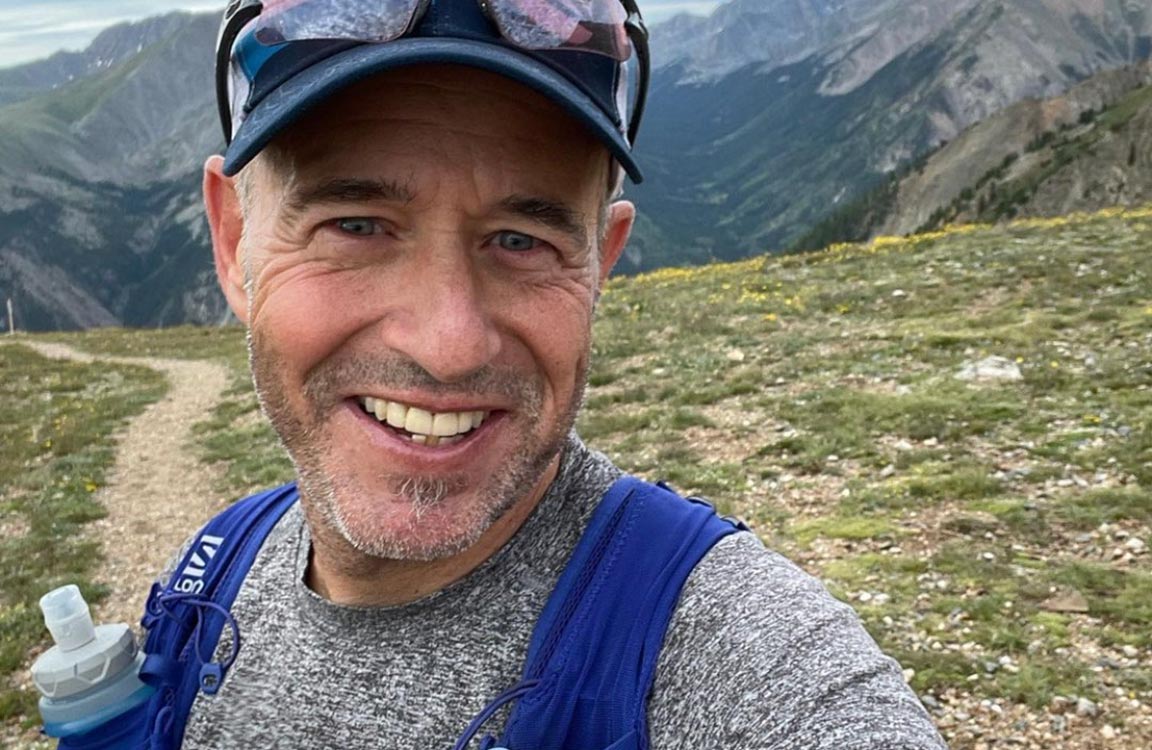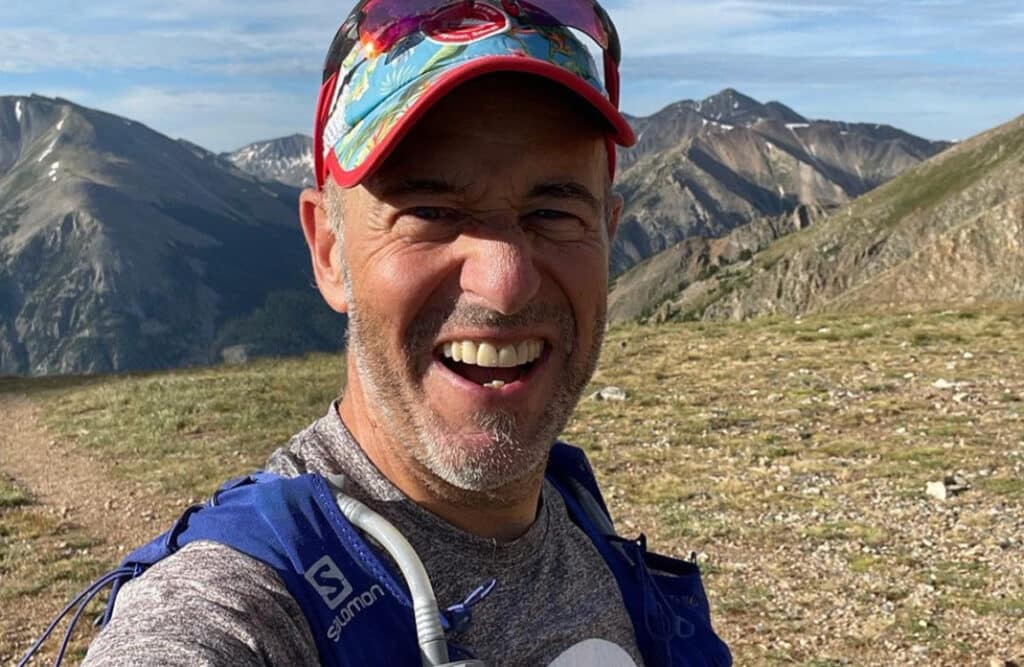
Turning Failure Into Opportunity, with Sports Psychologist and Coach Neal Palles
By Jim Rutberg with CTS Ultrarunning Coach Neal Palles
CTS Coach Neal Palles is living proof that more knowledge doesn’t always improve sporting performance. In addition to coaching for CTS, Neal is a mental performance consultant and licensed psychotherapist and has earned a UESCA Coaching Certification for Ultrarunning. And yet, as an athlete he has failed to finish the Leadman (now known as Lead Challenge) race series in five attempts. As coaches and athletes, we often learn more from failure than from success, and Neal’s professional and athletic experiences give him an advantage when working with athletes who must overcome significant challenges to achieve monumental personal results.
To stay engaged with endurance and ultraendurance sports, athletes must have a healthy relationship with failure. In most ultramarathons, way more athletes battle the time cuts than battle for age group or overall podium results. For instance, the finisher rate at the 2023 Leadville 100 Run was just 44%, the lowest it’s been since 2008. Fifty-six percent of the field failed to finish, including Neal.
Drawing on his professional expertise in sports psychology and coaching, we asked Coach Neal how athletes can better process acute failures, learn from them, and get themselves emotionally prepared to get back on the starting line.
Question: How did you get involved in the Leadman, or Lead Challenge, in the first place?
My story starts on an early morning in August 1996 I was driving my packed Honda Civic through the little mountain town of Leadville, Colorado. Elevation 10,158’. As I was driving through, I remember seeing a white banner across road that said something about a 100-mile mountain bike race. A few riders were riding up and down the street getting ready, and I stopped into a bakery for a donut and coffee.
“That’s nuts. Who’d ever do that?” The elevation of the town alone was higher than many of the peaks I’d climbed in the Pacific Northwest. It wasn’t something I’d ever consider, I decided. But my passion for adventure and challenge was strong. At the time, I was living out of my car and working for Outward Bound, teaching rock-climbing, mountaineering, and white-water rafting in Oregon and California. My passion for ‘striving’ was equally powerful.
Jump forward 20 years to 2016 and I somehow found myself competing in Leadville. I got the itch to compete after a friend completed the Leadman – as it was known then – in 2015. I figured it would be a great way to bypass the lotteries to get into the 100-mile run and mountain bike races. I was already a runner and thought I’d have an exceptional time learning to ride a mountain bike. That’s right, I entered a race series featuring two of the hardest mountain bike races in the country with no real cycling experience other than a few Half Ironman competitions five years prior. To make the challenge particularly difficult, I had absolutely no mountain biking experience, except for an hour ride I once did on a local trail.
The Lead Challenge consists of 5 events in the Leadville Race Series: a trail marathon in June, the Silver Rush 50-mile ultramarathon or 50-mile Silver Rush MTB in July (or both), the Leadville 100 MTB, a 10K run the day after the mountain bike race, and then finally the Leadville 100 Run a week later. Keep in mind, races in this series start at 10,000 feet above sea level and climb to elevations above 12,000 feet multiple times.
Perhaps because of that passion for striving, I lined up for all the events the Leadville Race Series had to offer, rather than starting with one and progressing from there. And so far I’ve tried finishing the Lead Challenge on five different occasions, most recently, several weeks ago.
► Free Ultrarunning Training Assessment Quiz
Take our free 2-minute quiz to discover how effective your training is and get recommendations for how you can improve.
Question: You DNF’d the 2023 Leadville 100 MTB, then came back the next morning to run the 10k that is part of the Lead Challenge, despite knowing the DNF excluded you from being an official Lead Challenge finisher. How do you keep going when you have a DNF in the middle of a multi-event race series?
The answer to that question is bigger than that one race, or even this one year. Originally, Leadman was supposed to be a ‘one and done’ challenge for me, but the race series has never gone as planned.
I have come up short on the bike… every time. Yet, I’ve never had a serious mechanical problem or injury. I’m just a slower rider. Even with expert training of some of the best coaches around, I still have had a lot of catching up to do in every aspect of mountain biking. And life forces, including aging (I started doing the series at 48 years old) are slowly pulling things in the other direction. Furthermore, on more than one occasion, the long day on the bike attempting to finish the LT100 MTB has caused enough fatigue that it negatively affected the 100-mile run the following week. The run was also slower than I’d like, leading me to be out on course so long that fatigue or injuries stopped me in my tracks.
So, why on earth do I keep doing this? I’ve spent ridiculous amounts of money and energy on this series of races. I’ve diverted time I could have spent with family and friends, and come away with the same results. Many would have given up years ago. Why would I not ‘officially’ finish the race (At times I have reached the finish lines, but after the time cuts), then turn around the next day to run a 10K, and the next week to run 100 miles? Why bother?
Enjoying This Article? Get More Free Running Training Tips
Get our coaches' best training advice, delivered straight to your inbox weekly.
I’d love to give some cliché answer, like, “It’s about the journey, not the destination.” That would be nice and cozy, but we all know it’s not the whole story.
Here’s what keeps me coming back, and what I work on with athletes who are trying – sometimes multiple times – to reach the finish line of a big personal goal:
- Acceptance that the journey towards a valuable goal is never a straight line. It is difficult to watch others accomplish what you have not. But your journey is not theirs. The reality is the path has twists and turns and ups and downs; it stagnates, it bumps up, and it drops down. We get injured, ill, life happens. Perhaps we succumb to bad training or our bodies move slower than our minds. Looking back to my earlier experiences in running, it took 11 years for me to qualify for the Boston Marathon. I went from running a 4:50:00 marathon to a 3:13:00. That’s huge, but that took time. Patience and perseverance must lead the way. You must commit to the long haul.
- Personal values have a greater weight than the outcome. Finishing tasks, learning, connecting, adventuring, being curious, striving, and getting out of my comfort zone are much more powerful than the outcomes. A few belt buckles, kudos on Strava, and a pickaxe are impermanent. The values, they’ll be with me for life.
- The Process. I said the journey wasn’t the reason, but it plays a role. The ‘process’ of training and preparing for the race series has taken me to places I’d never thought I’d go… the journey has been worth it, repeatedly. Not just the races series, but where the process has taken me in life. I’ve met incredible people, made lifelong friends, transformed my body, improved my overall health, and savored countless mountain views.
- Acceptance of the current reality. This doesn’t mean you stop striving to get better or that you resign yourself to poor performance. It just means being present and open to what your body is currently capable of. We do what we can with the tools we have in the moment and continue to focus on moving forward towards goals, aspirations, and values. Getting drawn into negative judgements of your own performance will only make a difficult challenge more unbearable.
- Eliminating fear of failure – and fear of ‘looking bad’. Fear of failure is common, but perhaps more insidious in this era of social media and instant online results is the ‘fear of looking bad’. As a professional coach, especially for a company whose athletes consistently beat the finisher rates in major trail running and cycling races, that could be a legitimate fear for me. But every mistake and every failure packs a powerful learning opportunity. If I quit trying of if obsessed on the ‘failure’ of it and how I looked to others, I’d never get anywhere. Moreover, I wouldn’t be a good guide for people experiencing similar struggles, or a good teacher so my colleagues can become better coaches. Risk looking the fool.
No one said finishing Lead Challenge would be easy. No one said it would be a given. But neither is anything in life. Keep striving despite the stuff that comes up, the roadblocks, and the obstacles. Be patient with your body and your mind and keep moving forward no matter what happens. Keep moving forward. I am. As I get older, the Lead Challenge isn’t getting any easier, but I like my chances… next time.
Neal Palles is a Licensed Clinical Social Worker and Mental Performance Consultant based in Longmont, Colorado. He provides individual psychotherapy and mental skills training/consultations to athletes at all levels through his practice at Colorado Psychotherapy and Sports Performance. He works as a endurance performance coach through CTS.



